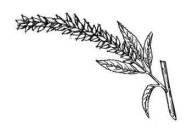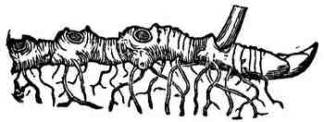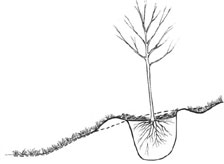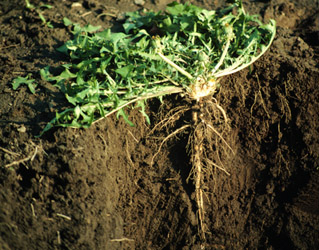|
PLANTING AND
MAINTENANCE
Plant propagation Growing plants can be done in many different
ways. For native plants it is best
that you have the correct species for the area that you are restoring.
The native species of plants have the genetic material necessary to
combat local plant diseases and insects and they are already accustomed to the
climate. The following are
practical guides for general propagation. For
specific information on each species consult a native plant manual or local
expert. This is sometimes
difficult.
To plant plants by seed you need to first
find a mature tree in the location you are planning to plant.
The correct location would include areas with similar conditions to where
you are trying to restore. You do
not want to collect plants from the Sierra Nevada Mountains to plant in the East
Bay Hills; they are completely different areas with different climates. This mature tree will have the correct
genetic adaptations to the environment you are planting along with natural
defenses against local bugs and pathogens.
Collect seeds at the proper time of year (generally early summer to fall
depending on the species) and plant at the right time.
Having a greenhouse or cold frames helps to produce the ideal conditions
necessary for your plants to germinate quickly.
Once germinated the plants are seedlings.
For each species you need to learn how long they can remain in a pot.
Some plants like oaks grow very large taproots to help find water.
If they are n a pot, they cannot adapt to the local conditions.
Small grasses and or flowers can be planted
once they are in the one gallon containers but trees, unless they have a well
developed tap root like an oak, should be planted after 2-3 years.
You want a healthy top portion of the plant and very healthy root in
order for your plant to survive. Place seed in soil and cover lightly with
soil. Water and continue to water
once germinated. After a few weeks,
transplant plant into a larger container. You
may want to add nutrients depending on the species.
Not all plants grow successfully through
seeds. Some plants, especially
those in wetlands can propagate by cutting a slice of a branch and emerge it in
moist soil or water. If you use
this method the cutting needs to be moist until it starts rooting. Willow trees are a common example of plants
that start by this method. Even
large branches that are cut germinate.
Some other trees can root by this methods but require younger branches. If you do not have a manual or any experts,
experiment! Rhizomes
Another successful way is to submerge the
rhizomes in water and let them grow for a few weeks. You can then transplant them in an area.
This should be done only prior to when rains will insure the soil will be
moist for a few months, until the tules become established.
Tree
Planting Planting a tree or any other plant requires
patience, diligence, and some hard work. Know
what you are doing and you can have yourself a wonderful plant for many years to
come. Preparing the soil
for a new plant
Dig a hole using a hole digger or shovel.
Start by making small depressions into the earth and use the handle as a
lever to push out the soil. Place
the soil near the hole (you will need it later) then to widen the hole take some
off the sides, so that you are not hefting more than you can carry, and place it
in your pile. Once your hole has reached about 1.5 times
the size of your plantís pot, in depth and width, you can start the process of
planting. Take the pot off
the plant carefully. Check the
roots, are they free or are there many very close together growing around the
pot? If they are free you can
proceed to the next step if they are growing together loosen the roots or take
them by the bottom and gently pull them apart to loosen.
Apply some mulch around the edge of the hole,
not directly against the trunk, to prevent moisture loss.
Water well to prevent shock and your plant will be able to survive. For Planting on a
slope:
make sure that you create a catch basin or shelf for the plants
to collect water. If you donít do
this plants will wash away during the next heavy rain.
This also serves as a shelf for the plant to sit on and provide stability
for the plant. Notice on the
picture to the right there is an area of flat ground that helps the water
collect and for the roots to spread out. Non-Native Plant Removal Non-native plants compete with native plant
species for space and resources. Many
non-native plants tend to be aggressive growers and reproduce quickly.
Plants become established through different seed dispersal mechanisms
including wind, bird, and attachment on other animals including humans.
Seeds plant themselves in the ground and will grow if soil and weather
conditions are good. Control
of these plants can be difficult but with diligence can be completed and
successful A good example of seed propagation is the
growth of Erodium cicutarium, which
came to California from Spain. Historians
suspect the horses that the Spaniards brought over ate grain and the feces would
contain seeds. Seeds could have
gotten in the hoofs or shoes and easily brought to California.
It acts as a time line of when the Europeans arrived in California. They
can even trace the movement of the plant species from southern to northern
California. . Removing various grasses Grass roots tend to be shallow and by
removing the major growing portion of the plant you have killed the plant.
Make sure that the grasses have not gone to seed because next season you
will have to repeat the process. Using
a shovel or a hoe you can gently remove the growing portions of the grass and by
removing the stalks you can prevent the regrowth.
As a preventative measure add a layer of mulch to prevent the buildup of
seeds from sprouting and causing problems.
The taproot is a single root that goes deep
into the ground and provides an anchor for the plant and example of such a
non-native is the dandelion. The
photo at the right shows the dandelion plant with its root system the above
portion with green and white is what lies above the ground while the root is
below. By cutting off the top of
the plant the root is able to continue to grow and produce another green top.
You need to remove the root in order to remove this type of non-native.
Another type similar to this in more marsh areas includes the curly dock
with its taproot. To remove the root you need to get down to
its level and either pull the root out or take a weeder to remove the root
without disturbing the surface too much. Thistles and thorny
plants These plants should be removed using a shovel
with the head held at ground level chop off the growing portion.
Carefully rake into a bag to be picked up or place into a compost pile.
Many species of thistles have small itchy thorns that can imbed
themselves into your skin and provide you with the wonderful experience of
having to pull them out so be careful. Large shrubs and trees are already
established and removing them can cause a large ecologic impact therefore it is
not recommended to remove all of them. General things to remember when
removing non-natives:
PRUNING TREES To information on pruning trees we suggest going to the following U.S. Department of Agriculture site: http://www.na.fs.fed.us/spfo/pubs/howtos/ht_prune/prun001.htm |




